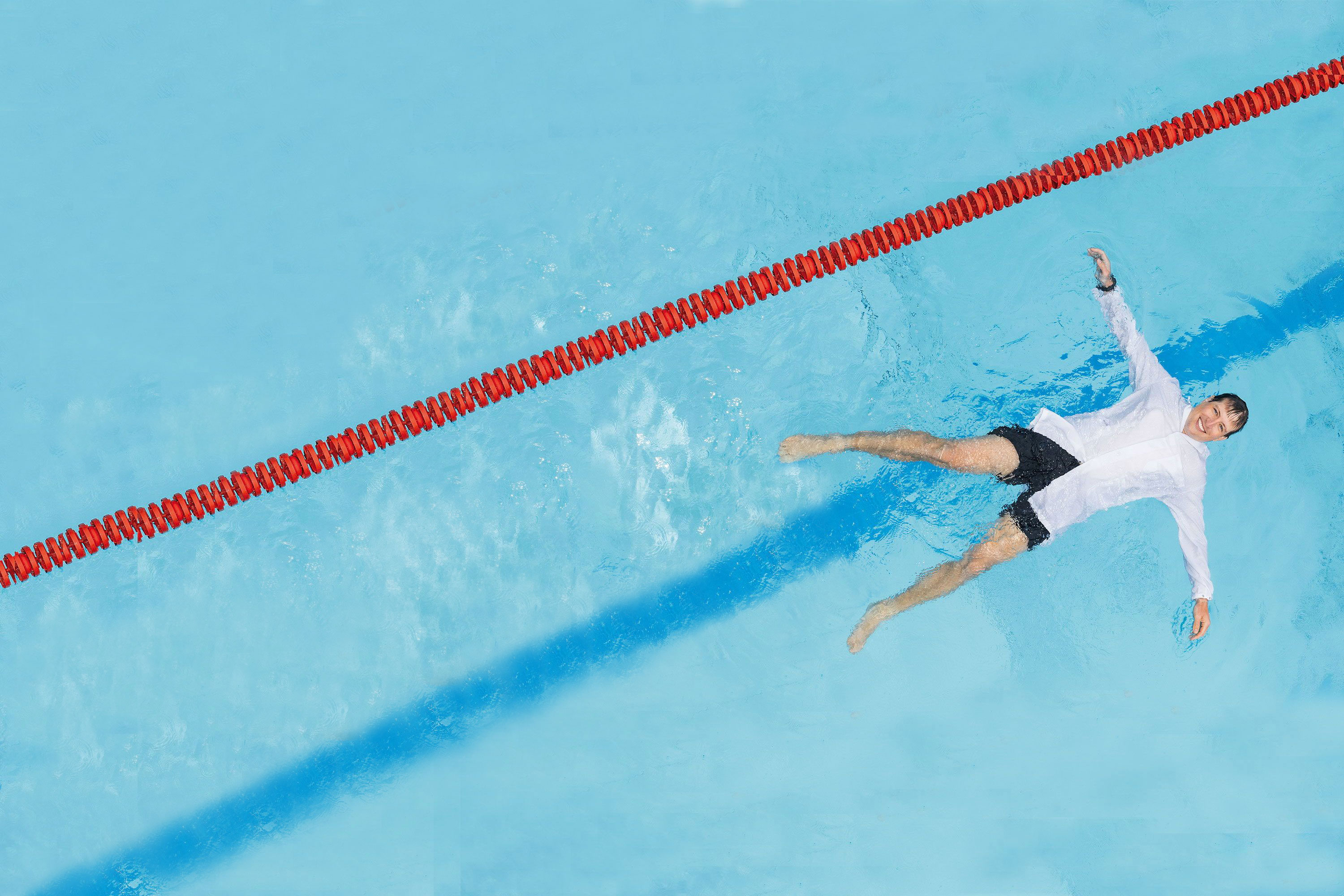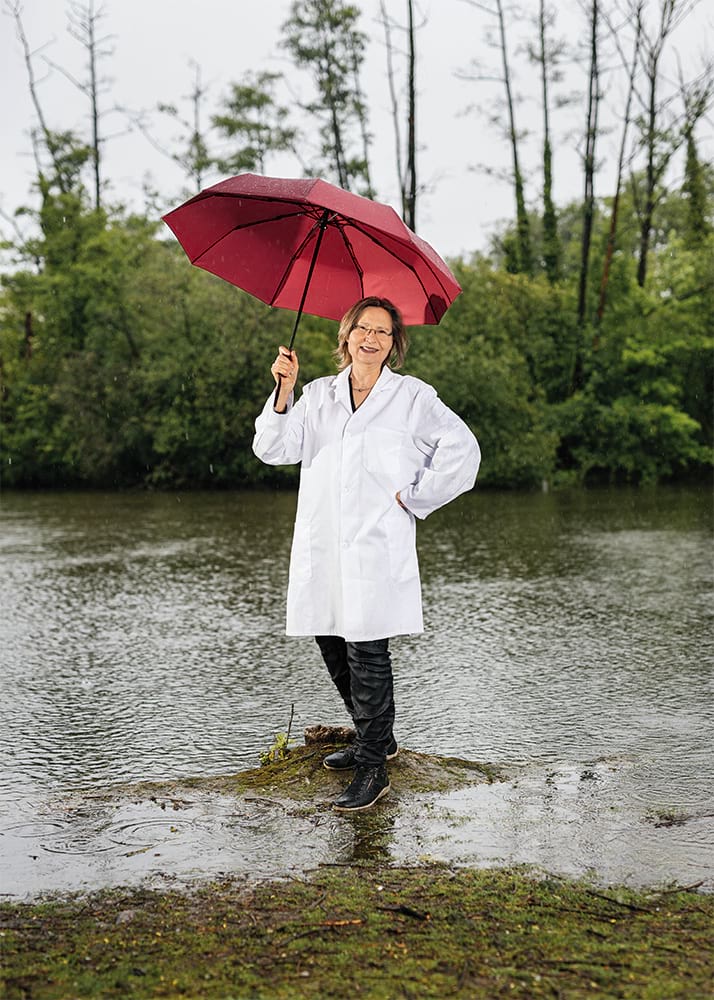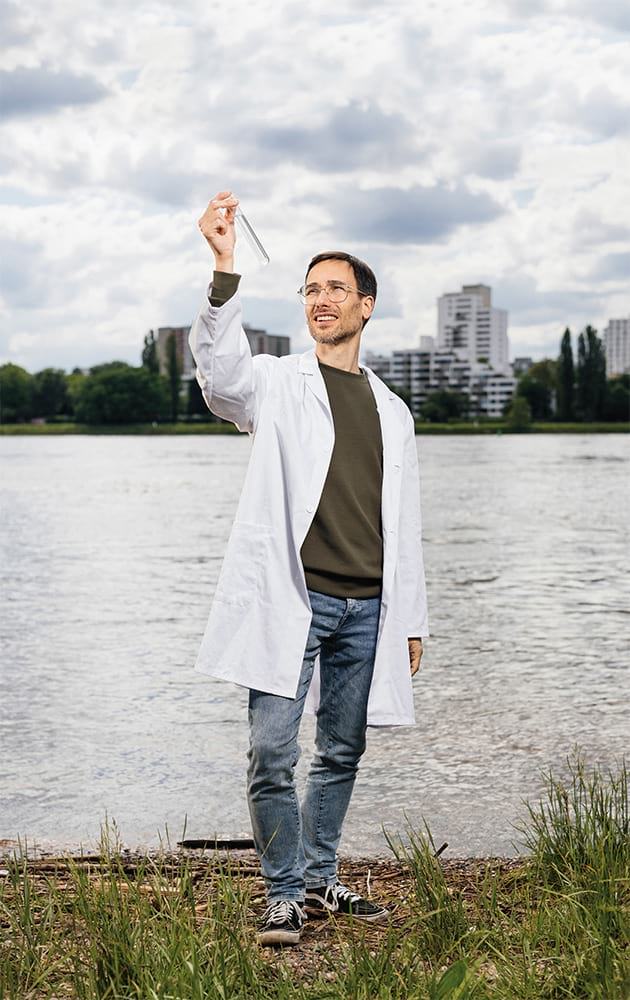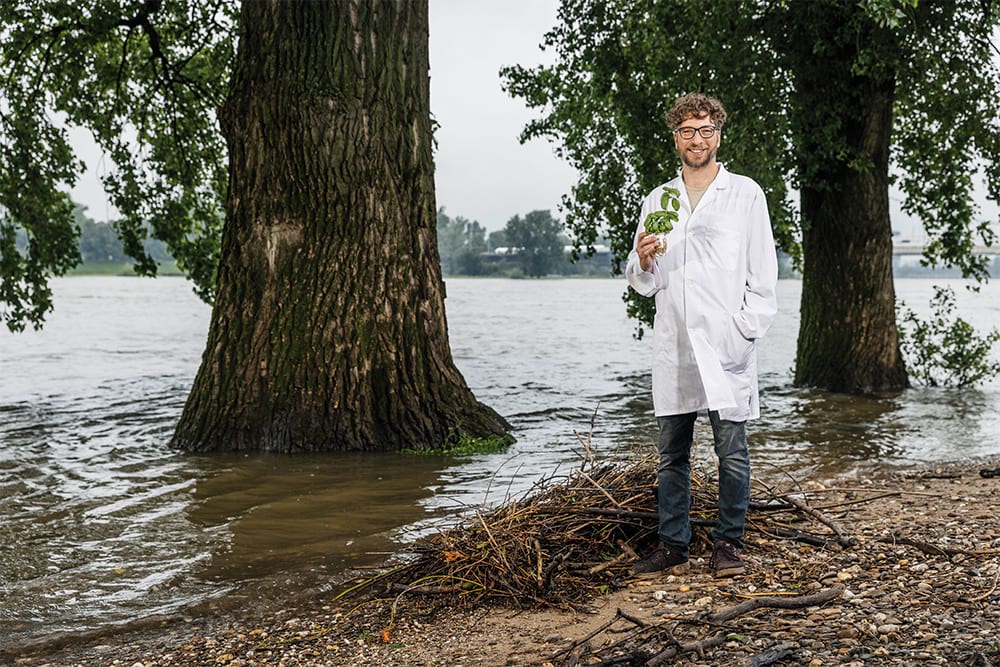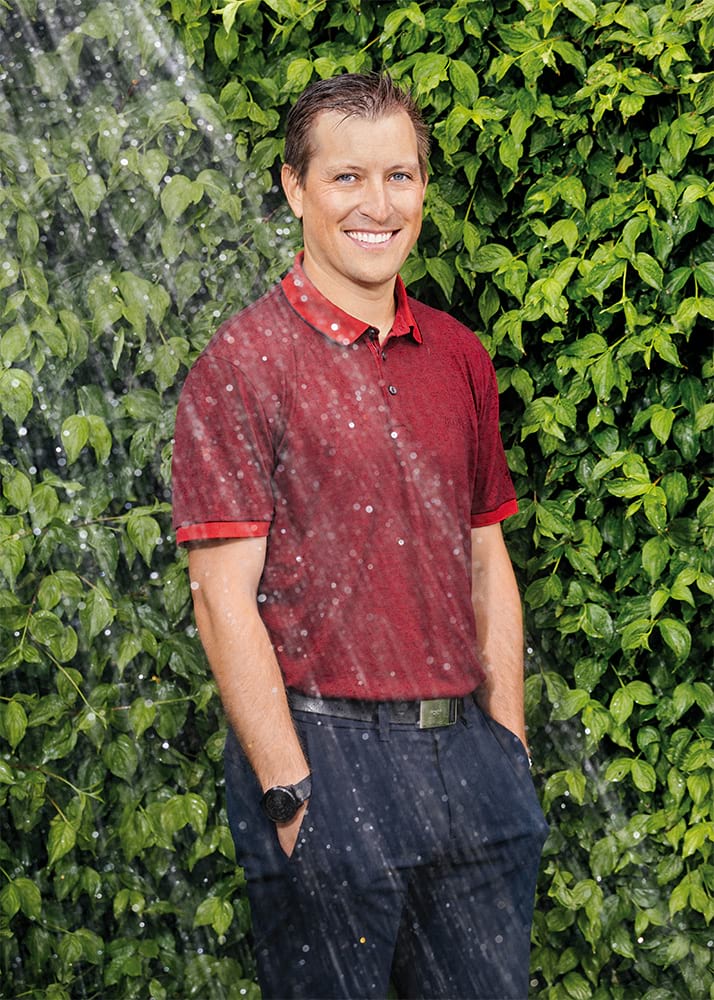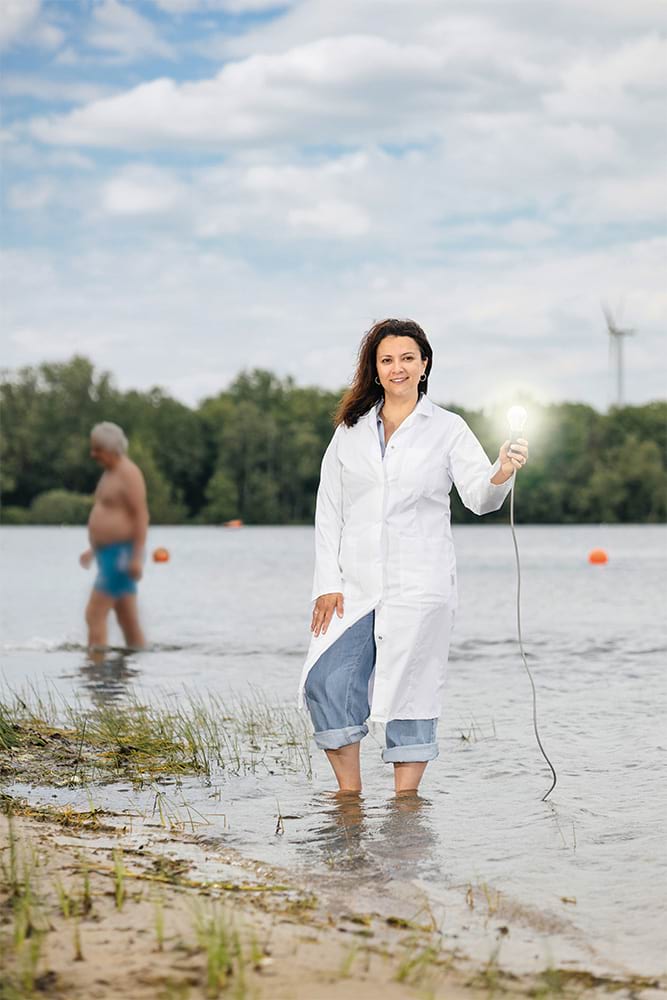Industry: recycling water, reclaiming raw materials
The research institutes that make up the Fraunhofer Water Systems Alliance (SysWasser) are also looking for innovative ways to process industrial and municipal wastewater streams so the water can be recycled in the manufacturing or agriculture sectors. This approach offers huge potential in terms of sustainable water management, as Germany’s manufacturing sector uses 4.5 billion cubic meters of water annually. At the same time that water conservation efforts are under way, there is also a growing awareness in industry that process water often contains chemicals or residual substances that could be reused in industrial applications. Wastewater from metalworking businesses can even be used as a source of costly raw materials such as silver and copper, which can be extracted and then recycled. This aspect makes reclamation an exciting prospect for both environmental and economic reasons.
What is in the water? To find out, the Fraunhofer Institute for Photonic Microsystems IPMS has developed an integration technology that can be used in the future to measure water parameters such as pH levels and nitrate, phosphate, and potassium concentrations continuously in parallel and in real time, all with just one sensor chip. Multiple ion-sensitive field-effect transistors (ISFETs) are built into the chip to determine the concentration of numerous ions in the water. Dr. Olaf R. Hild, head of the Chemical Sensors business unit at Fraunhofer IPMS, believes in the new technology: “This kind of measurement system unlocks new possibilities for applications in environmental analytics, agriculture and water management, and in the booming market for indoor farming applications.”
Researchers from the Fraunhofer Institute for Ceramic Technologies and Systems IKTS have set up a technology platform on the grounds of the Bitterfeld-Wolfen wastewater treatment plant to develop and test different treatment andbpurification methods to meet the needs of industrial customers. This sewage treatment plant is one of the largest in central Germany, and it processes wastewater from nearly 300 businesses located in a nearby chemical park. By combining advanced ceramic membranes with electrochemical, sonochemical, photocatalytic and biological processes, even process water with extremely heterogeneous compositions can be filtered and treated as required. The result is water and valuable materials, both ready for reuse.
This circular approach can make even sustainable products more sustainable. Take solar panels, for example: Scientists from the Fraunhofer Institute for Building Physics IBP and the Fraunhofer Institute for Solar Energy Systems ISE worked together with TU Berlin and Rena Technologies GmbH to create a model of water flows in a 5-gigawatt solar cell factory. Then, on that basis, they reviewed the introduction of various strategies for circular use of water. The researchers found that the amount of water used to produce the solar cells could be reduced by as much as 79 percent and wastewater by up to 84 percent, all with production technologies already available today. And that makes it easier to build new solar cell factories, even in locations with less water available.
“We have two approaches to recommend: reuse of low-contaminated wastewater (LCR) and what is called minimal liquid discharge (MLD), in which certain residual substances are reused for other purposes,” explains Peter Brailovsky from Fraunhofer ISE. This makes it possible to use residual etching solutions and other substances in cement production.
